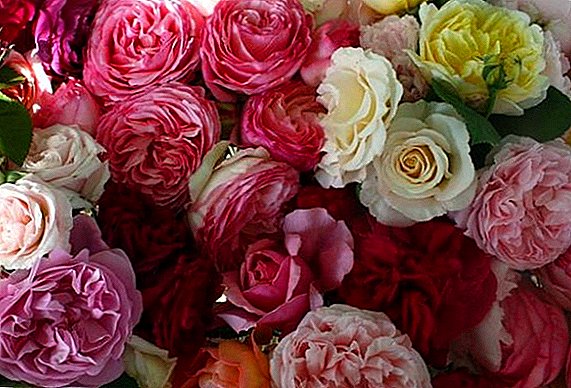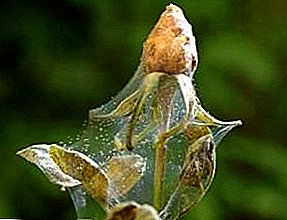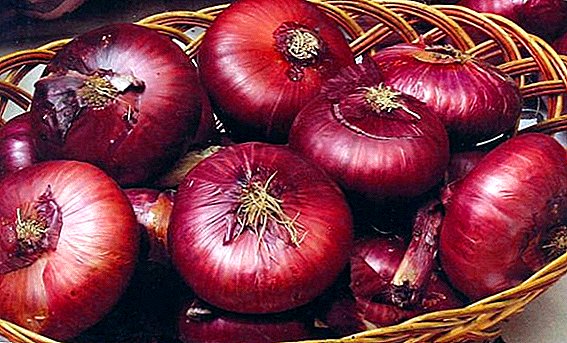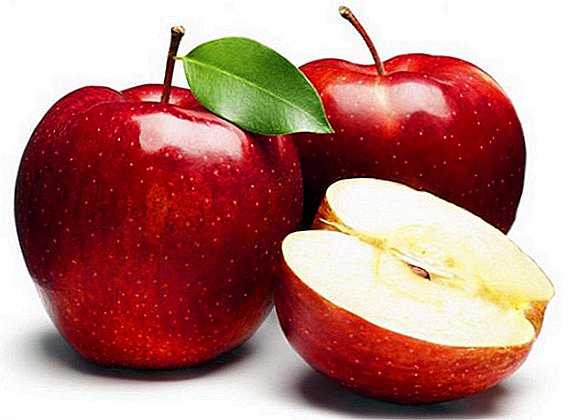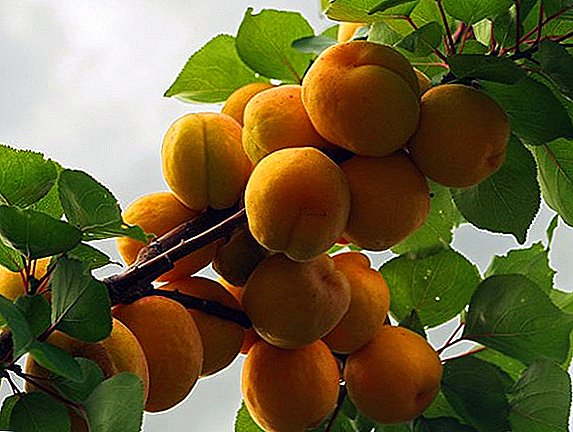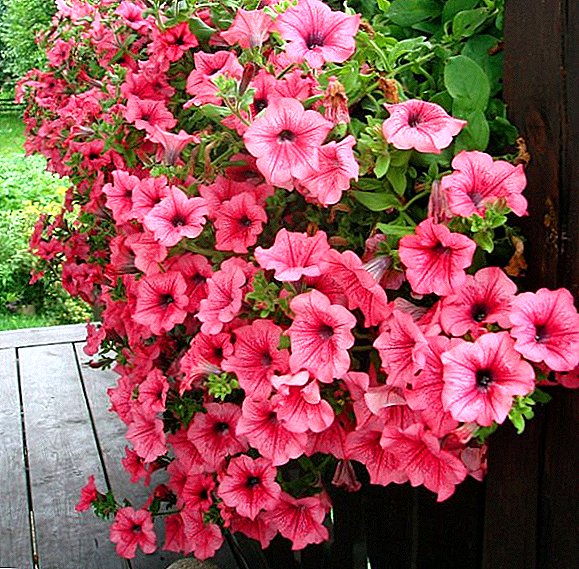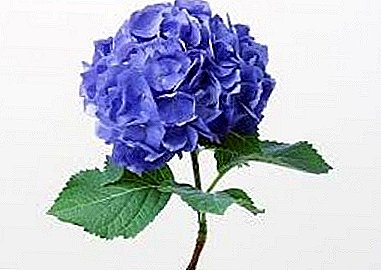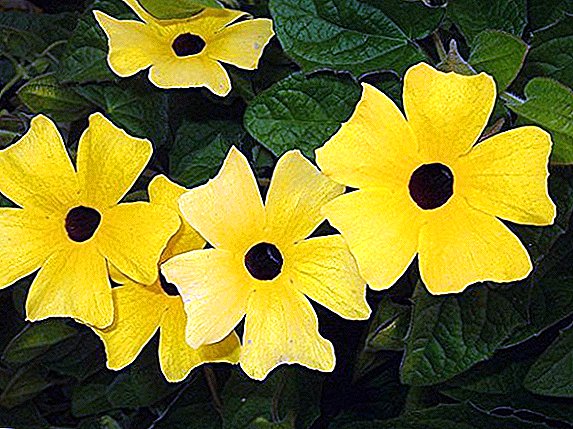 Tunbergia belongs to the Acanta family. It is quite numerous, and in it can be found both shrub and liana forms. In total, there are about two hundred species, the birthplace of tunbergia are the tropics of Africa, Madagascar and southern Asia.
Tunbergia belongs to the Acanta family. It is quite numerous, and in it can be found both shrub and liana forms. In total, there are about two hundred species, the birthplace of tunbergia are the tropics of Africa, Madagascar and southern Asia.
Did you know? The flower got its name in honor of the famous Swedish naturalist and explorer of Japan and South Africa Karl Peter Thunberg.Due to the wide variety of colors, sizes and shapes, tunbergia is grown with pleasure both at home and used to decorate the garden. Most species require abundant watering. Tunbergia is a perennial plant, but because of its love for heat in the northern regions, it will grow as an annual. Flowering period - from May to September.
Tunbergia creepers
Types of tunbergia that grow in the form of lianas are much larger than shrub species. The most common varieties that are used in gardening, can be considered:
- winged tunbergia;
- fragrant tunbergia;
- large-flowered tunbergia;
- tunbergia related;
- tunbergia laurel;
- Tunzirgy mizorenskuyu;
- tutbergia battiskomba.
Winged thunberg
Origin: the tropics of Africa. Required humidity: not demanding.  Winged tunbergia is a grass-type liana. The flowers have a very original look - bright yellow petals with a black center.
Winged tunbergia is a grass-type liana. The flowers have a very original look - bright yellow petals with a black center.
Did you know? It is because of this that the inhabitants of Europe often call the black-eyed tunbergia Susanna.
Stems curl and slightly pubescent. The leaves are up to 7 cm long. The winged scapes (partially or completely), the base is truncated, opposite, heart-shaped or triangular. Flowers reach 4 cm in diameter, arranged singly, axillary. Bracts (2 pieces) are egg-shaped. The rim is orange or creamy, with a wheel-shaped bend, and at the top is a swollen curved tube, with a dark brown color inside.
Important!The winged tundergium of the Southerfish is often affected by a spider mite.
Fragrant thunbergia
Origin: India. Required humidity: not less than 35%.  The climbing vine, which becomes woody with age, grows up to 6 m in length at home, but grows in average to 3 meters in a temperate climate. It has a ribbed branching stalk. There is also a “fluff” consisting of pressed hairs. The leaves grow in length up to 7 cm. The shape can be arrow-shaped, petiolate, opposite or triangular. The top is always sharp, and the base is either heart-shaped or truncated, the top is dark green and the bottom is lighter. Flowers reach a diameter of 5 cm, arranged singly, axillary. Bracts (2 pieces) have an egg-shaped green color. The wheel-shaped limb of the corolla, five-membered, white in color, passes into a narrow straight tube. The limb fragments truncated at the ends.
The climbing vine, which becomes woody with age, grows up to 6 m in length at home, but grows in average to 3 meters in a temperate climate. It has a ribbed branching stalk. There is also a “fluff” consisting of pressed hairs. The leaves grow in length up to 7 cm. The shape can be arrow-shaped, petiolate, opposite or triangular. The top is always sharp, and the base is either heart-shaped or truncated, the top is dark green and the bottom is lighter. Flowers reach a diameter of 5 cm, arranged singly, axillary. Bracts (2 pieces) have an egg-shaped green color. The wheel-shaped limb of the corolla, five-membered, white in color, passes into a narrow straight tube. The limb fragments truncated at the ends.
Thunbergia grandiflora
Origin: northeast india Required humidity: 60% or more.  The only evergreen vine among all varieties. The shoots are almost bare, the leaves have a palmate-dissected form. They can be smooth on both sides or slightly pubescent. The flowers of the tunbergia grandiflora reach 8 cm in diameter, grow in dense hanging tassels, and occasionally are arranged singly. The corolla is painted in all shades of lilac (occasionally white), two-lipped in structure, has two upper and three lower lobes. This species is also called tunbergia blue for an abundance of large blue flowers with which the plant is covered.
The only evergreen vine among all varieties. The shoots are almost bare, the leaves have a palmate-dissected form. They can be smooth on both sides or slightly pubescent. The flowers of the tunbergia grandiflora reach 8 cm in diameter, grow in dense hanging tassels, and occasionally are arranged singly. The corolla is painted in all shades of lilac (occasionally white), two-lipped in structure, has two upper and three lower lobes. This species is also called tunbergia blue for an abundance of large blue flowers with which the plant is covered.
Thunbergia related
Origin: East Africa. Required humidity: not less than 35%. 
The length of the vines reaches 3-4 meters. Shoots have a tetrahedral shape. Leaf plates are either flat or wavy, with wedge-shaped bases on short petioles. The flowers of akin tunbergia are one of the largest - up to 10 cm. They grow under an inclination and are located in the leaf axils. The corolla is purple, and the mouth from the inside is yellow.
Important! It is best to grow related tunbergia in rooms, because when grown in flowerpots it blooms more abundantly.
Thunbergia lauroliferous
Origin: Malay Archipelago. Required humidity: not less than 35%.  This lianoobraznoe plant refers to annuals. Shoots are bare, filiform, on which the leaves are occasionally arranged oppositely. They are 15 cm in length, and up to 8 cm in width, and have an elliptical shape. The petioles are rather long, within 5-7 cm. The flowers consist of five petals, which grow together at the base into a tube, almost without aroma, of a pale blue color.
This lianoobraznoe plant refers to annuals. Shoots are bare, filiform, on which the leaves are occasionally arranged oppositely. They are 15 cm in length, and up to 8 cm in width, and have an elliptical shape. The petioles are rather long, within 5-7 cm. The flowers consist of five petals, which grow together at the base into a tube, almost without aroma, of a pale blue color.
Mt.
Origin: south of india Required humidity: not less than 35%.  It is considered the most mysterious and strange representative of tunbergy. This plant is often presented as a source of mystical energy. It is believed that it contributes to the exacerbation of feelings and helps in self-realization. In the wild, this vine grows to 10 m, but its domestic species does not exceed 6 m. Creepers lignify with age. The leaves have an elongated shape and are pointed at the ends. Sometimes the edges may be slightly jagged, but mostly they are smooth. Flowers liana have an unusual shape. They hang in long tassels, with the length of such a peduncle reaching 50-60 cm. The bracts are colored purple-green, and the flowers themselves are yellow. The pharynx of the flower has a complex structure of four lobes: the upper spoon-shaped ones have a straight shape, the lower ones are tripartite, and the two lateral ones are twisted backwards.
It is considered the most mysterious and strange representative of tunbergy. This plant is often presented as a source of mystical energy. It is believed that it contributes to the exacerbation of feelings and helps in self-realization. In the wild, this vine grows to 10 m, but its domestic species does not exceed 6 m. Creepers lignify with age. The leaves have an elongated shape and are pointed at the ends. Sometimes the edges may be slightly jagged, but mostly they are smooth. Flowers liana have an unusual shape. They hang in long tassels, with the length of such a peduncle reaching 50-60 cm. The bracts are colored purple-green, and the flowers themselves are yellow. The pharynx of the flower has a complex structure of four lobes: the upper spoon-shaped ones have a straight shape, the lower ones are tripartite, and the two lateral ones are twisted backwards.
Thunbergia Battiscombe
Origin: tropical regions of Africa. Required humidity: not less than 35%.  Curly vine, for the growth and active flowering which requires support. The plant has many bare shoots, which grow large leaves. They have an elliptical shape, as well as a bright green color. Located opposite, and the edges are smooth. The flowers are blue-purple, while the petals are closer to the base and grow together and look something like an elongated tube. Zev from the outside is white, turning into a purple-blue, and its inner part has a yellow color.
Curly vine, for the growth and active flowering which requires support. The plant has many bare shoots, which grow large leaves. They have an elliptical shape, as well as a bright green color. Located opposite, and the edges are smooth. The flowers are blue-purple, while the petals are closer to the base and grow together and look something like an elongated tube. Zev from the outside is white, turning into a purple-blue, and its inner part has a yellow color.
Did you know? Often this liana is confused with erect tunbergia. They are a bit similar in appearance, but the Tunbergia of the Battiscombe is distinguished by wider leaves, as well as darker flowers. Bracts larger, and on their surface you can see the mesh pattern.
Thunbergia bushes
Thunberry bushes, in addition to the obvious differences from the vines, are quite similar to their fellows. They also have a beautiful look and are used as decoration. The most common shrubs are:
- Tunbergia Vogel;
- Natalia Tunbergia;
- Tunbergia is upright.
Thunbergia Vogel
Origin: Masias-Nguema-Biogo island. Required humidity: not less than 35%.  Shrub with straight branches. The leaves are glossy, dark green. The shape of the leaf may be different - from ovoid to oblong, wedge-shaped at the base, and at the edges they can be both smooth and notched. The leaves of this variety of tunbergia are rather large, reaching a length of 7-15 cm. The flowers have oblong buds, their color is white at the base of the corolla, white, and light yellow from the inside. The flower itself combines the contrast of a dark purple base and bright yellow edges.
Shrub with straight branches. The leaves are glossy, dark green. The shape of the leaf may be different - from ovoid to oblong, wedge-shaped at the base, and at the edges they can be both smooth and notched. The leaves of this variety of tunbergia are rather large, reaching a length of 7-15 cm. The flowers have oblong buds, their color is white at the base of the corolla, white, and light yellow from the inside. The flower itself combines the contrast of a dark purple base and bright yellow edges.
Thunbergia Natal
Origin: South Africa. Required humidity: not less than 35%.  This shrub prefers a subtropical and warm temperate climate, even when grown indoors. The branches do not hover, but they are quite flexible. They are also tetrahedral, which is the hallmark of this plant. The leaves are dark green and the shape is ovate, elongated and pointed at the top.
This shrub prefers a subtropical and warm temperate climate, even when grown indoors. The branches do not hover, but they are quite flexible. They are also tetrahedral, which is the hallmark of this plant. The leaves are dark green and the shape is ovate, elongated and pointed at the top.
Did you know? It was first discovered in the province of Natal, South Africa, for which he received its name.
The flowers of the Tunbers Natali are a funnel with petals grown at the base. In color they are purple, with yellowish shades on the edges.
Erect
Origin: tropical Africa. Required humidity: not demanding.  This type of tunbergia is somewhat reminiscent of the Natalian tunbergia. In contrast, the stems are ribbed here. Leaves up to 6 cm long, located opposite. They are smooth, ovate or broadly lanceolate. Bracts have a yellow-green color. The flowers grow up to 4 cm in diameter, grow alone. The corolla is five-membered, with petals of bright purple color. Zev outside white, and inside - yellow.
This type of tunbergia is somewhat reminiscent of the Natalian tunbergia. In contrast, the stems are ribbed here. Leaves up to 6 cm long, located opposite. They are smooth, ovate or broadly lanceolate. Bracts have a yellow-green color. The flowers grow up to 4 cm in diameter, grow alone. The corolla is five-membered, with petals of bright purple color. Zev outside white, and inside - yellow.


